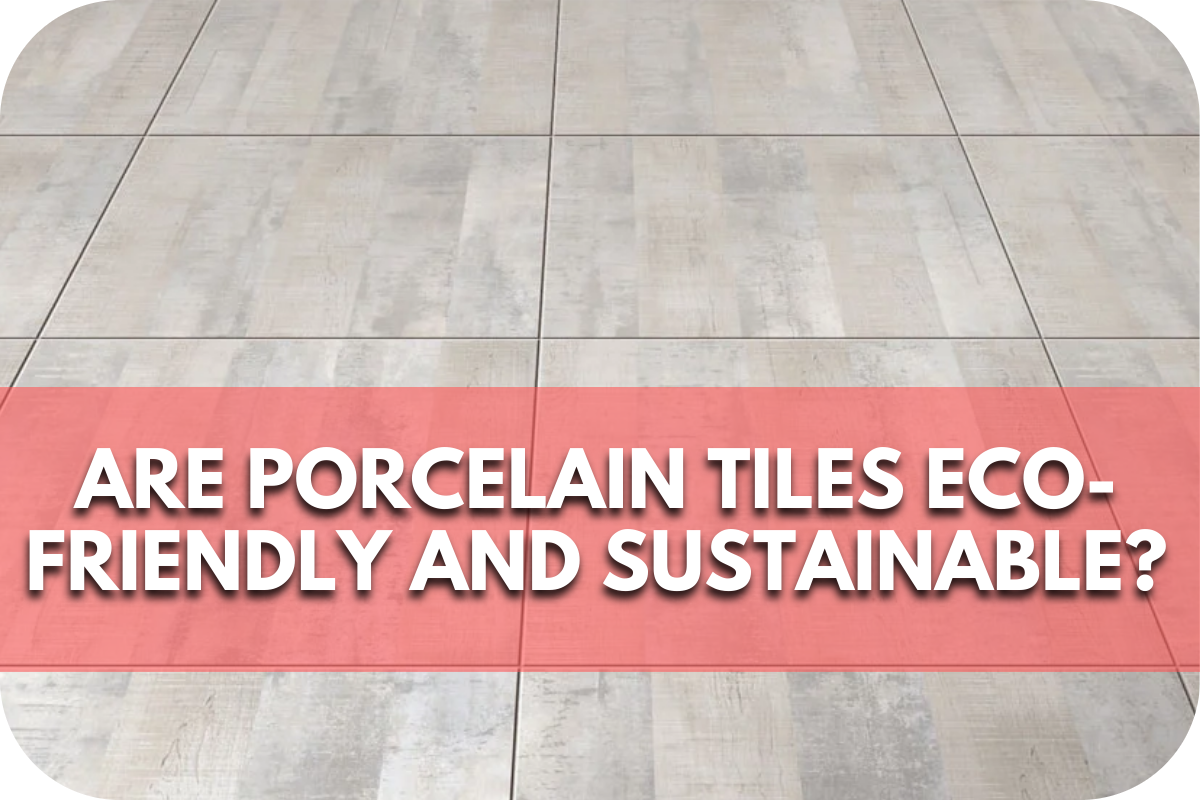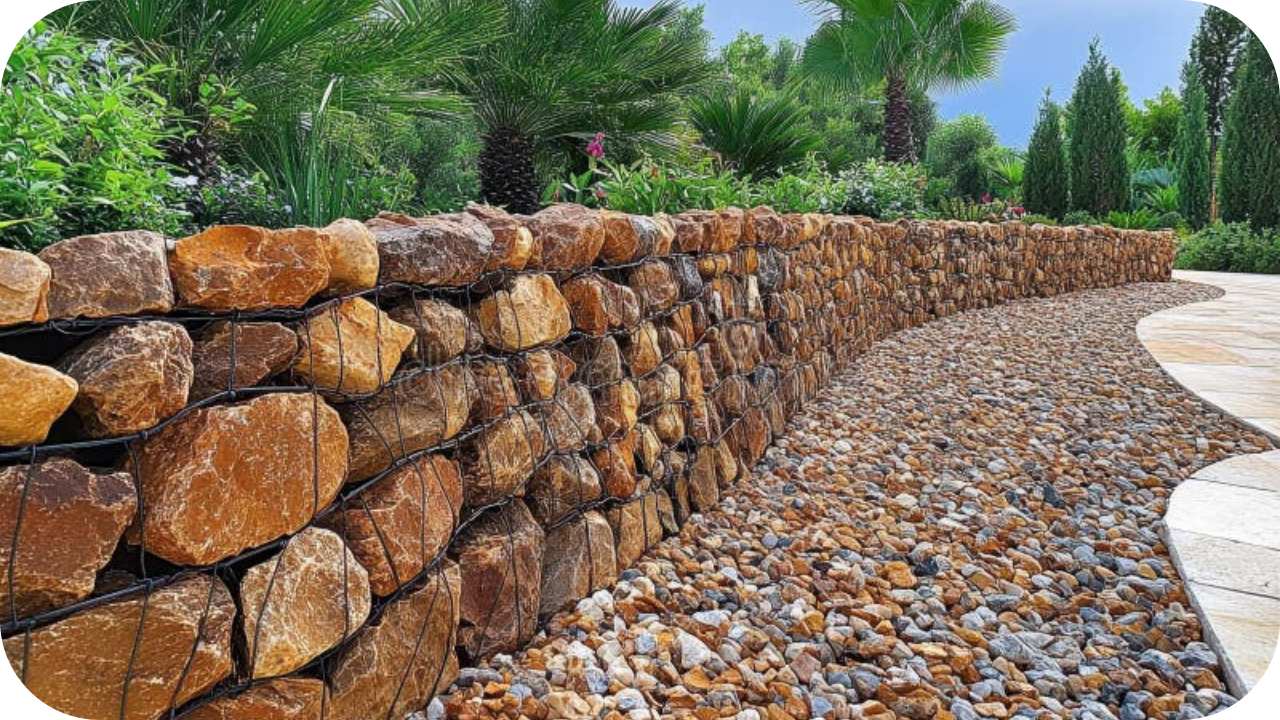
Are you concerned about the environmental impact of your building materials?
Many homeowners and builders struggle to find durable and sustainable flooring options, often feeling overwhelmed by the lack of clear information on eco-friendly choices.
In this article, we explore the eco-friendliness and sustainability of porcelain tiles, their environmental impact, and their benefits. Discover if porcelain tiles are the green choice you’ve been searching for.
What Are Porcelain Tiles?
Porcelain tiles are a type of ceramic tile made from refined clay fired at high temperatures. Known for their durability and water resistance, porcelain tiles are denser and less porous than traditional ceramic tiles.
This characteristic makes them highly suitable for indoor and outdoor applications, including floors, walls, and countertops.
The manufacturing process involves pressing the clay into shape, followed by high-temperature kiln firing. This results in a hard, dense material resistant to scratches, stains, and moisture penetration.
Porcelain tiles come in various colours, patterns, and textures, including options that mimic natural stone or wood.
Key benefits of porcelain tiles include their low maintenance requirements and long lifespan, making them a sustainable choice for eco-conscious consumers.
They are also prized for their thermal properties and are often used in radiant heating systems for efficient energy use. Despite their durability, porcelain tiles are relatively lightweight, facilitating easier installation and reducing transportation costs.
Whether used in residential or commercial settings, porcelain tiles offer a blend of aesthetic appeal and practicality, making them a versatile and popular choice in modern architecture and interior design.
Environmental Impact of Porcelain Tile Production
The production of porcelain tiles involves several processes that can impact the environment. One significant aspect is extracting raw materials, including clay and other minerals, which can lead to habitat disruption and landscape alteration.
The mining and transportation of these materials contribute to carbon emissions and energy consumption.
During manufacturing, the firing process in kilns requires substantial energy input, typically from natural gas or electricity, contributing to greenhouse gas emissions and air pollution. Additionally, the disposal of waste materials, such as unused clay or fired tile fragments (known as “biscuit” or “green” waste), can pose environmental challenges if not managed properly.
However, technological advancements have enabled manufacturers to improve efficiency and reduce environmental impact. Some companies recycle water used in production and implement energy-efficient kilns.
Furthermore, the durability and longevity of porcelain tiles reduce the need for frequent replacements, which can offset environmental impacts over their lifecycle.
To mitigate environmental concerns, consumers can choose tiles certified by environmental standards such as LEED (Leadership in Energy and Environmental Design) or look for products with recycled content.
Sustainability Features of Porcelain Tiles
Porcelain tiles are durable and stylish and boast several sustainability features, making them a green choice for eco-conscious homeowners and builders.
1. Durability and Longevity
One of the primary sustainability benefits of porcelain tiles is their exceptional durability. They are highly resistant to wear, scratches, and moisture, which means they can last for decades without needing replacement. This longevity reduces the need for frequent renovations and the associated environmental impact of manufacturing and transporting new materials.
2. Low Maintenance Requirements
Porcelain tiles require minimal maintenance, reducing the need for harsh chemical cleaners that can harm the environment. Simple cleaning with water and mild, eco-friendly detergents is usually sufficient to keep them looking pristine. Their low maintenance also contributes to their long lifespan, enhancing their sustainability.
3. Indoor Air Quality Benefits
Porcelain tiles are fired at high temperatures, vitrifying the material and creating a non-porous surface. This non-porous quality means they do not harbour dust, allergens, or mould, contributing to better indoor air quality. Unlike some flooring options that emit volatile organic compounds (VOCs), porcelain tiles have low emissions, making them a healthier choice for indoor environments.
4. Recyclability
While not universally recyclable, porcelain tiles can be repurposed or recycled in specific contexts, such as being crushed as a road base or in new tile production. This potential for recycling helps reduce the environmental impact associated with disposal.
Comparing Porcelain Tiles to Other Flooring Options
When considering the sustainability of flooring options, comparing porcelain tiles with other popular materials such as ceramic tiles, natural stone, vinyl, and laminate is essential. Each option has its own environmental impact and benefits.
Porcelain vs. Ceramic Tiles
When choosing between porcelain and ceramic tiles, it’s essential to understand their differences. Porcelain tiles are made from refined clay fired at higher temperatures, making them denser and less porous than ceramic tiles.
This density gives porcelain tiles superior durability and water resistance, making them suitable for indoor and outdoor use, including high-traffic areas and wet environments like bathrooms and kitchens.
Ceramic tiles, crafted from a mixture of clays and fired at lower temperatures, are generally less dense and more porous than porcelain. This makes them more susceptible to moisture absorption and less durable in demanding conditions.
Both types offer a wide range of colours, patterns, and textures, though porcelain’s manufacturing process often allows it to mimic natural materials like stone or wood with greater fidelity.
Porcelain tiles typically command a higher price due to their durability and manufacturing process. However, their longer lifespan and lower maintenance requirements may justify the initial investment, especially in high-traffic or moisture-prone areas.
Porcelain vs. Natural Stone
Choosing between porcelain tiles and natural stone involves considering several factors related to sustainability and practicality.
Porcelain tiles are manufactured from refined clay fired at high temperatures, offering consistency in colour and texture. They are denser and less porous than natural stone, making them highly resistant to stains and moisture and suitable for various applications indoors and outdoors.
Natural stone, such as granite, marble, or sandstone, is quarried directly from the earth, offering unique variations in colour and pattern. While it boasts a natural aesthetic, its extraction process can lead to environmental impacts, including habitat disruption and carbon emissions from transportation.
In terms of maintenance, porcelain tiles typically require less effort to clean and maintain than natural stone, which may require regular sealing to preserve its appearance and durability.
From a cost perspective, natural stone tends to be more expensive due to its natural sourcing and unique characteristics, whereas porcelain tiles offer a more cost-effective alternative with similar aesthetic appeal and durability.
Porcelain vs. Vinyl and Laminate
Comparing porcelain tiles with vinyl and laminate flooring reveals significant differences in sustainability and durability. Porcelain tiles are crafted from natural clay materials fired at high temperatures, ensuring exceptional durability and resistance to moisture and stains. They are versatile for indoor and outdoor use, offering longevity and minimal maintenance requirements.
Vinyl, made from PVC and synthetic compounds, and laminate, composed of synthetic layers with a photographic top layer, are generally more affordable but may not match the durability and eco-friendliness of porcelain.
Vinyl flooring can emit Volatile Organic Compounds (VOCs), impacting indoor air quality over time.
From a sustainability standpoint, porcelain tiles are preferable as they are recyclable, contribute to better indoor air quality, and have a longer lifespan than vinyl and laminate.
Conclusion
Porcelain tiles offer a sustainable and eco-friendly option due to their durability, low maintenance, and adherence to environmental standards.
Ready to make an eco-conscious choice for your home? Explore certified porcelain tile options and transform your space sustainably.
More To Explore

8 Advantages of Using Stone Grid Gabions in Your Landscape
Are you seeking a durable, cost-effective solution to elevate your landscape? Stone grid gabions might be the perfect choice! These versatile, eco-friendly structures offer a

10 Stunning Feature Wall Ideas Using Natural Stone
Looking to elevate your home with a stunning feature wall? Natural stone offers a timeless, elegant touch that can transform any room. From sleek marble


